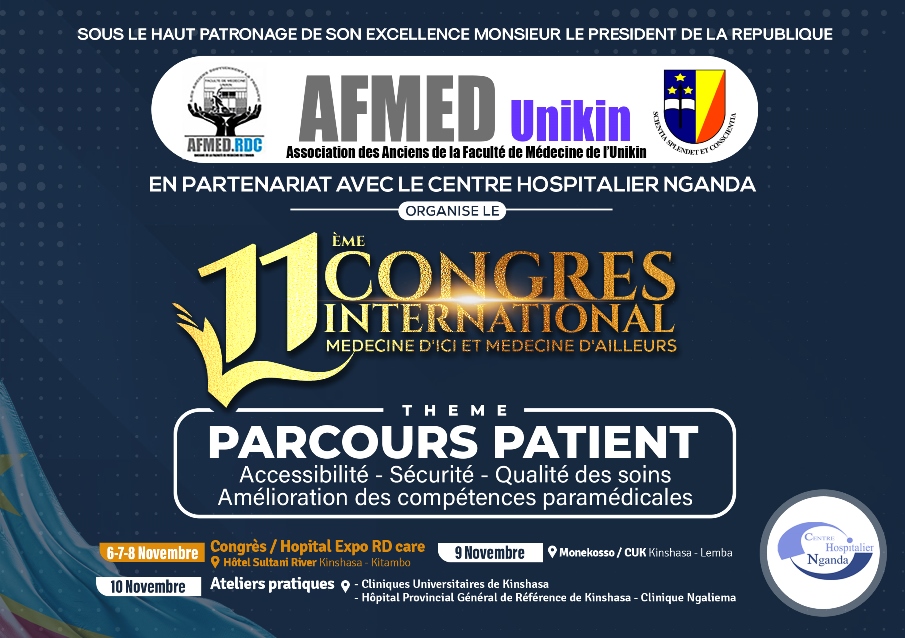Par
Patrick Sekele Marob Ndjock
Docteur en Médecine Dentaire
Mémoire présenté et défendu en vue de l’obtention du titre de Spécialiste en Parodontologie.
==============
Contexte: L’adhérence des patients parodontaux à la TPS est le principal facteur de réussite des traitements parodontaux actifs.
L’adhérence incomplète est largement rapportée chez les patients parodontaux mais aucune étude n’a été réalisée au sein des institutions sanitaires en ROC.
Objectif: L’étude vise à évaluer le niveau d’adhérence des patients parodontaux aux CUK.
Méthodes: Il s’agit d’une étude transversale à visée analytique réalisée aux CUK de 2016 à 2019 auprès » des patients parodontaux d’au moins dix-huit ans dont les trois rendez-vous avaient été déterminés pour la TPS après le traitement parodontal non chirurgical, sélectionnés par un échantillonnage non probabiliste de type convenance.
Une fiche de recueil et un questionnaire structuré ont été utilisés pour collecter les données.
Le test duKhi-Carré et la régression logistique binaire multivariée avec un IC à 95% étaient utilisés pour rechercher des associations entre les variables.
Résultats: Sur 97 patients parodontaux, 80,4% étaient adhérents incomplets contre 19,6% ; 58,8% sujets étaient du sexe féminin versus 41,2% pour le sexe masculin.
En utilisant une régression logistique binaire multivariée, le type d’instrument utilisé [AOR : 3,9 IC95% : (1,5 ;
10,3)] et le type de traitement parodontal non chirurgical mis en place [AOR : 6,3 IC95 : (1,2 ; 32,3)] se sont avérés être significativement associés à l’adhérence incomplète des patients parodontaux à la TPS.
Conclusion: L’adhérence incomplète des patients parodontaux à la TPS aux CUK était élevée.
Le type d’instrument utilisé et le type de traitement parodontal non chirurgical instauré étaient les variables associées à l’adhérence incomplète.
Mots clés: Adhérence, Patients parodontaux, Thérapeutique parodontale de soutien.
Background: The compliance of periodontal patients to SPT is the main factor in the success of periodontal treatments. Incomplete compliance (noncompliance) is widely reported in periodontal patients but no studies have been performed in healthcare institutions in the ORC.
Objective: The study aimed to assess the level of compliance of periodontal patients to University Clinics of Kinshasa.
Methods: This was a cross-sectional, analytical study that lasted 3 years, among 97
periodontal patients, subjects of eighty years and more and three meetings after active periodontal treatment determined. Subjects were selected by non-probability sampling.
A collection form and structured questionnaire were used. Chi-square test with 95% CI and multivariate logistic regression was used to look for associations between incomplete compliance of periodontal patients to SPT and major factors.
Results: It emerges from this study that the frequency of periodontal patients with incomplete compliance was 80.4% versus 19.6%. Subjects of female sex were 58.8% versus 41.2% for men.
Using multivariate binary logistic regression, the type of instrument used [AOR: 3,9 IC95%: (1,5; 10,3)] and the type of non-surgical periodontal treatment implemented [AOR : 6,3 IC95%: (1,2 ; 32,3)] were found to be significantly associated with incomplete compliance of periodontal patients to SPT.
Conclusion: The incomplete compliance of periodontal patients to SPT at University Clinics of Kinshasa was high. Some variables have been associated with incomplete compliance including the type of instrument used and the type of non-surgical periodontal treatment.
Keywords: Compliance, Periodontal patients, Supportive periodontal treatment.









